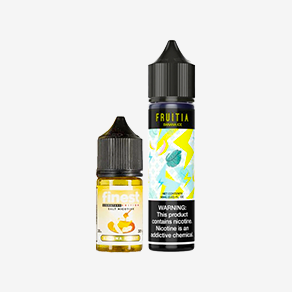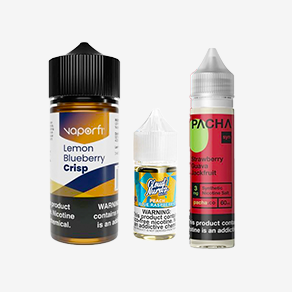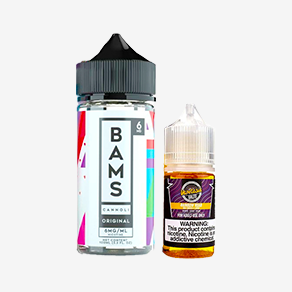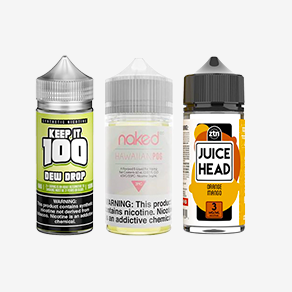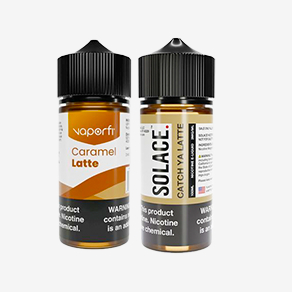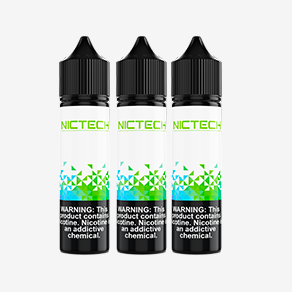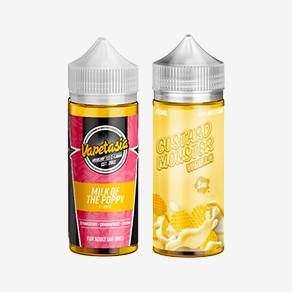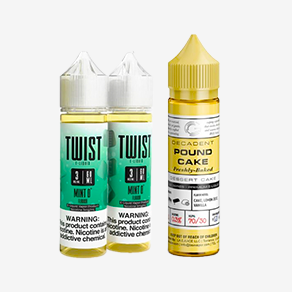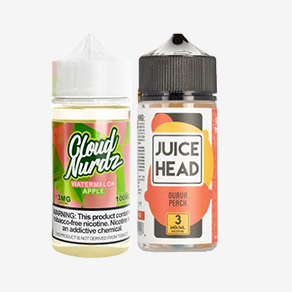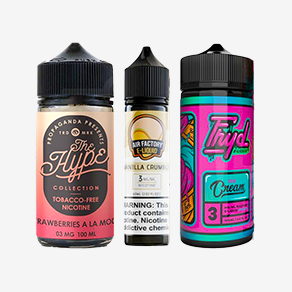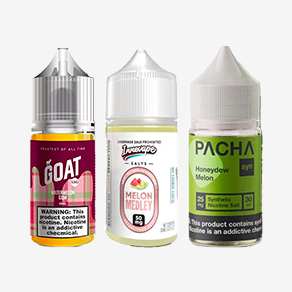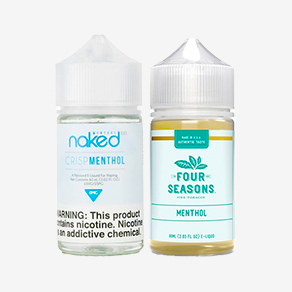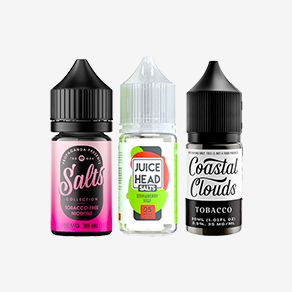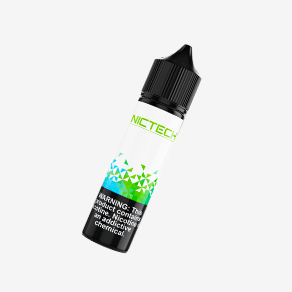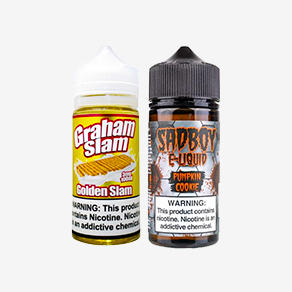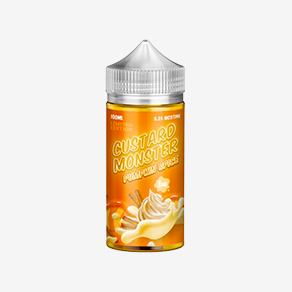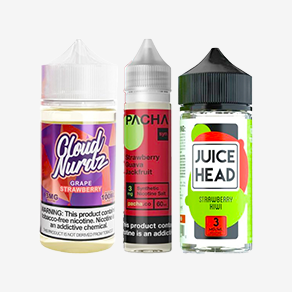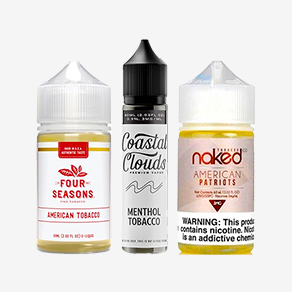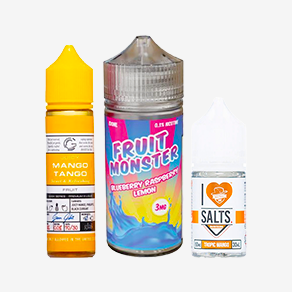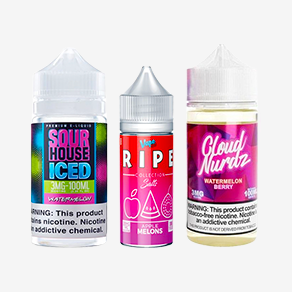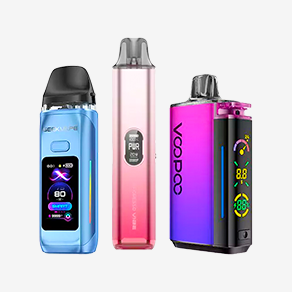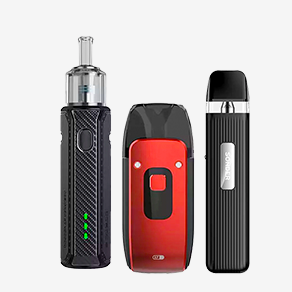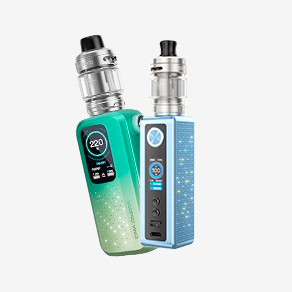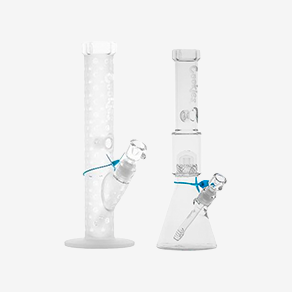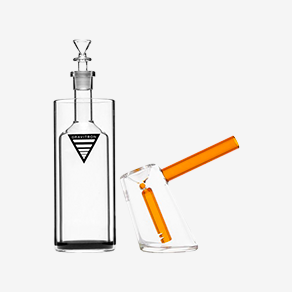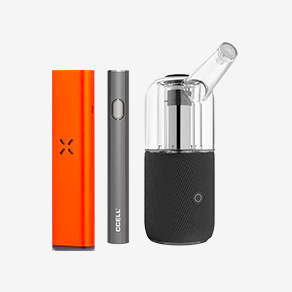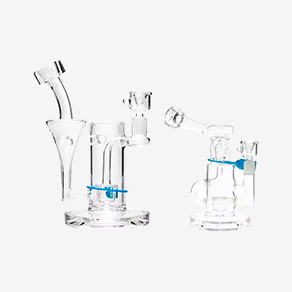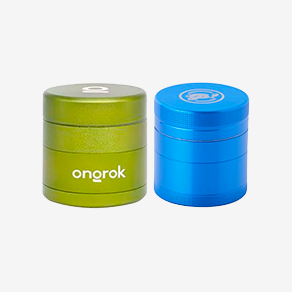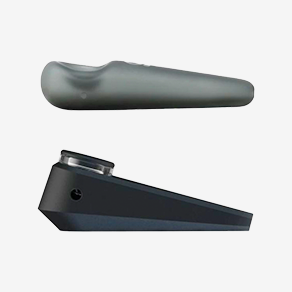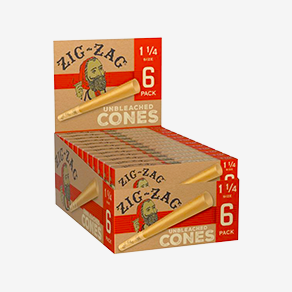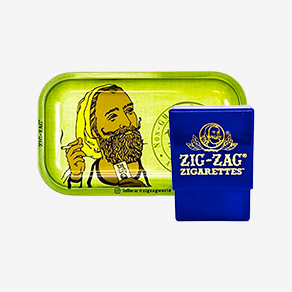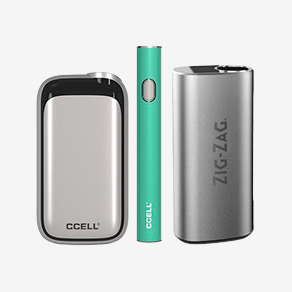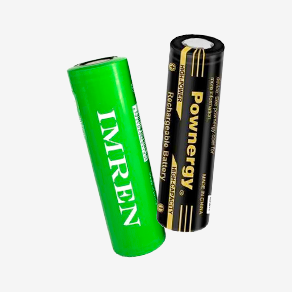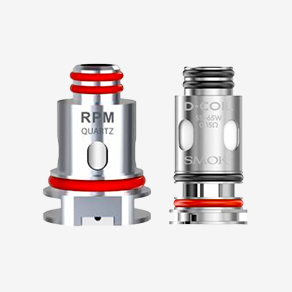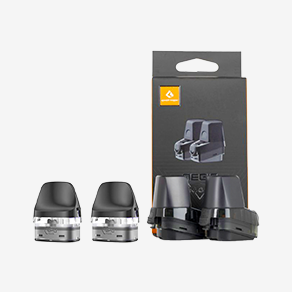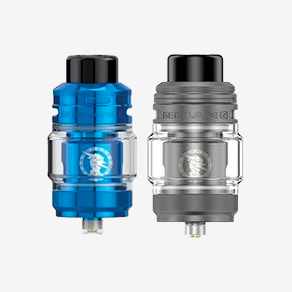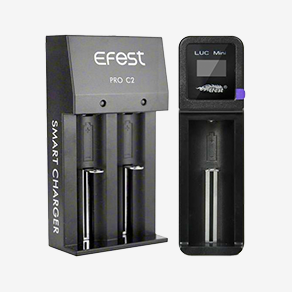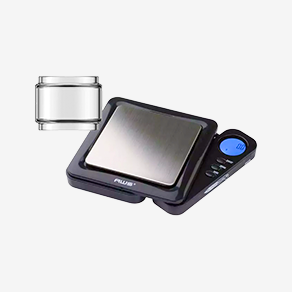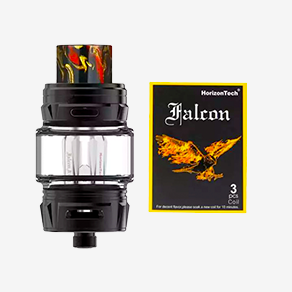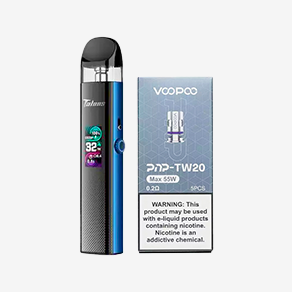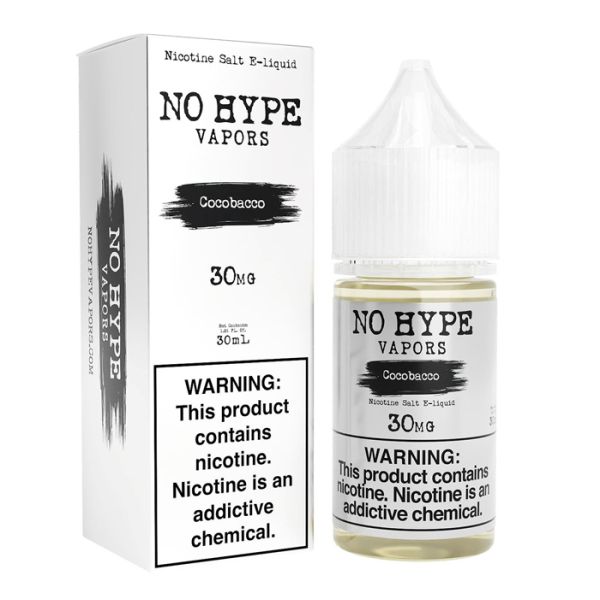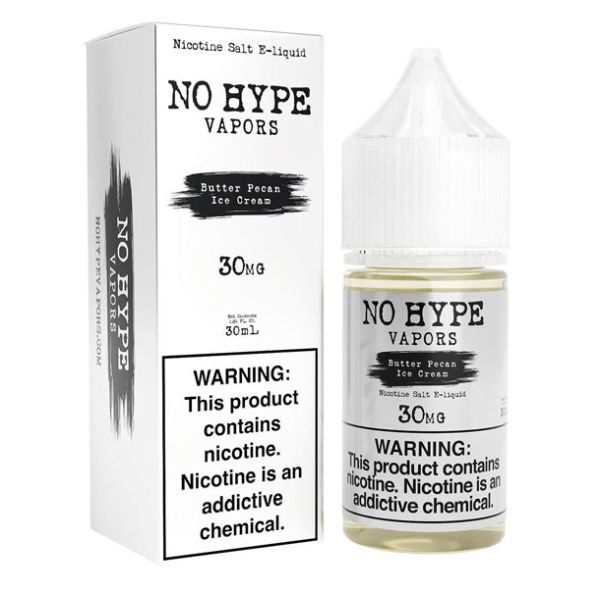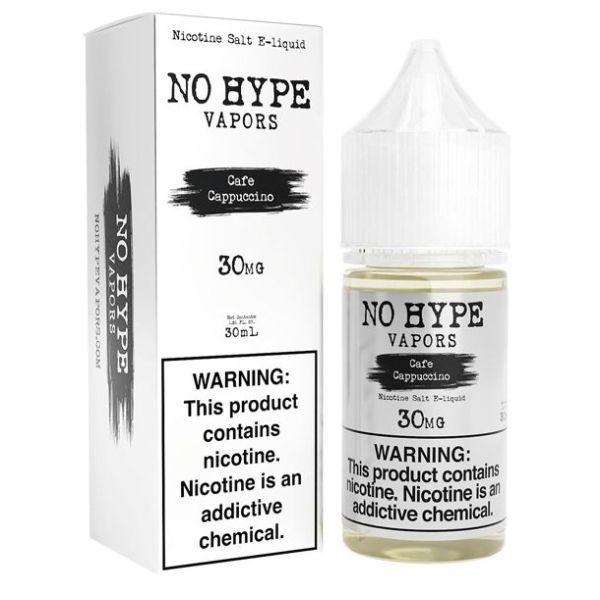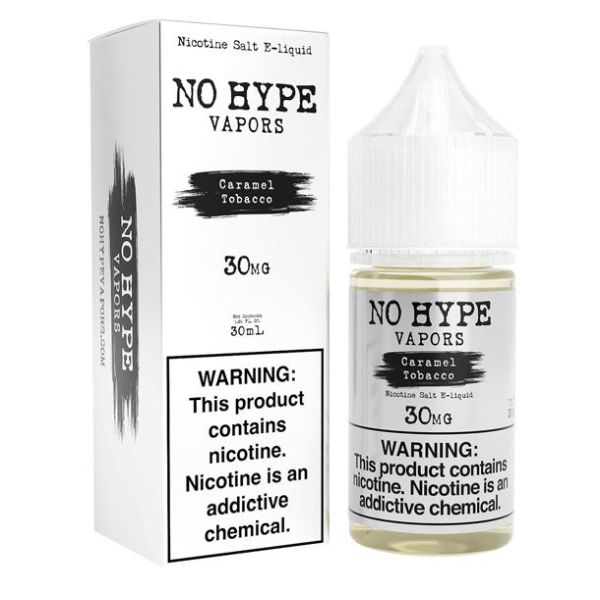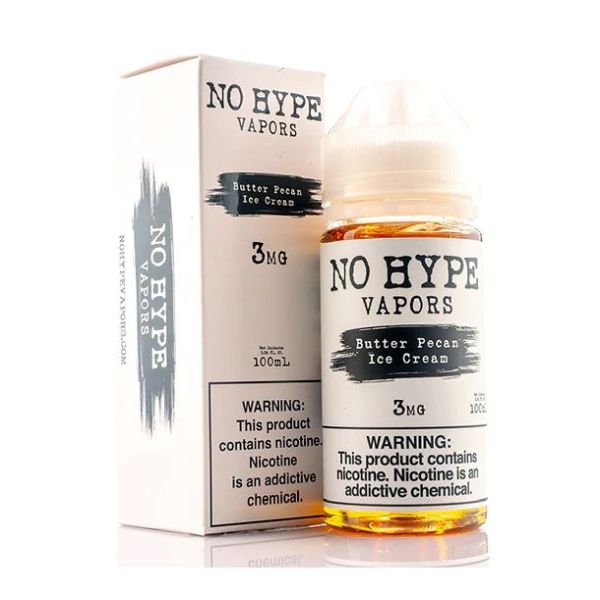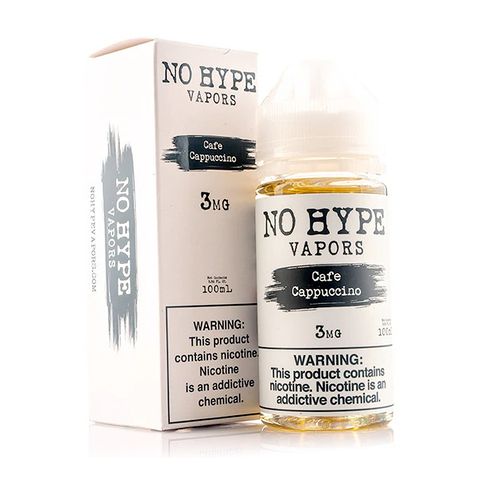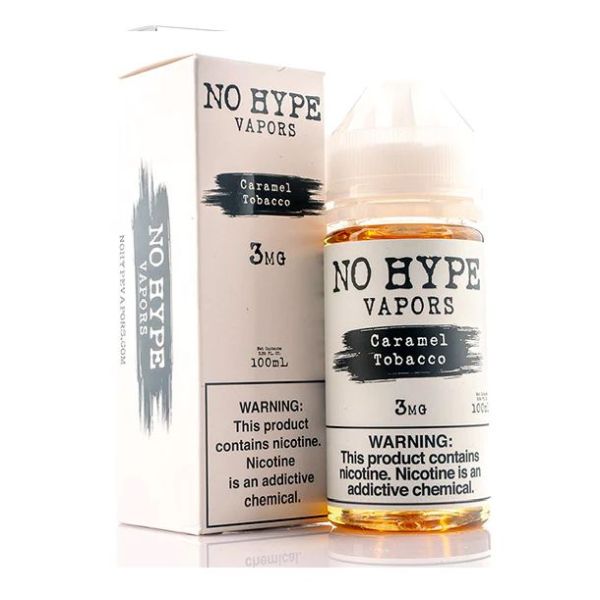-
A
A Beginner’s Guide on How to Use Vape Pods A Beginner's Guide to Sub-ohm Vaping A Mini Vape Shopping Guide for 2019 A Parent’s Guide to Vaping: How to Talk to Your Teen About E-Cigarettes A Powerful New Era: the VaporFi Volt 2 Tank is Here! Advanced Personal Vaporizer (APV) All Treats and No Tricks for Our Deal of the Week! American Spirit Alternatives An Update on Vape Tax Increase in New York Announcing Very Berry Slushie Are Dry Herb Vaporizers Worth It? Are Vapes Gluten Free? Aspire Breeze 2 All-In-One Vape Starter Kit Review Aspire Cobble AIO Vape Pod Starter Kit Product Review At What Temperature Does THC Vaporize And Evaporate At? August Juice & Blend of the Month and Our EJuice Contest Winner! Australia Nicotine Ban & Vaporizers
-
B
Beginner’s Guide to Sub-Ohm Vaping Beginners Guide to Vaping - Where to Start Benefits & Best of HHC Benefits of Delta 8 Benefits of Delta 10 Benefits of Using a Pod System Best Advanced Vape Guide Best All-In-One Vape Devices for 2024 Best Apple Vape Juice Best Banana Vape Juice 2024 Best CBD E-Liquids & Oils Guide Best Cereal Vape Juice Best Coffee Flavored Vape Juice of 2024 Best Dab Pen Deals Best Dab, Wax, or Concentrate Pens of 2024 Best Delta 8 Brands Best Delta 8 Carts Best Delta 8 Disposables Best Delta 8 Edibles Best Delta 8 Gummies Best Delta 8 Products for Sleep Best Delta 10 Products Best Dessert Vape Juice Best Disposable Vapes 2025 Best Drip Tips for Your Vape: 2019 Edition Best Electronic Cigarettes 2024 Best Fruit Vape Juice 2023 Best Grape Flavored Vape Juice 2024 Best Large Vapes Best Mouth-to-Lung Tanks for 2019 Best No Nicotine Vape Juice Best Pod Mod & Vape Pod Systems Best Products for a Great Throat Hit Best RDAs [Rebuildable Dripping Atomizers] for 2019 Best RDTAs for Flavor of 2019 Best Refillable Vape Cartridges Best RTA Vape of 2019 Best Salt Nic Juice Brands of 2024 Best Salt Nic Vapes of 2024 Best Small & Compact Vapes to Fit in Your Purse Best Squonk Mods for 2024 Best Strawberry Vape Juice 2024 Best Sub-Ohm Vape Tanks for 2024 Best Sub-Ohm Vape Tanks for Fall 2020 Best Sweet Vape Juice Flavors 2024 Best Tobacco Nic Salts Best Vape Kit for Beginners: Deal of the Week Best Vape Mods Best Vape Mods for Clouds Best Vape Pens for 2024: Vaporizer Pens You Need To Try Best Vape Pod Systems Best Vape-Friendly Cities Best Vapes of 2024 Black Friday Cyber Monday Vape Deals Blagoy Ivanov Fights for Your Right to Vape!
-
C
Camel Alternatives Can You Bring a Vape to a Concert / Music Festival? Can You Smoke / Vape on the Beach in California? CAN YOU TAKE VAPES ON A PLANE? TRAVELING WITH E-CIGARETTES Catch Our Deal Of the Week: Catch Ya Latte! CBD Vape Effects: How Does CBD Vape Make You Feel? Cheyden Leialoha: Repping the Vape Fam at VFC 52! Choosing the Right Material for Your Hand Pipe Choosing the Right Vape Pen Cartridge Cigar Vapes & Flavors Cigarette Types & Brands Clasing Clouds: Competition Vaping Coachella Vaping & Marijuana Event Cole Bishop Amendment Status Could Marine Le Pen be the First Vaping President?
-
D
Dab Pen vs Cart: Ease of Cart Batteries Dab Pens vs Dab Rigs: Which is Right for You? Dating & Vaping: Up Your Sex Appeal Deal of the Week Coming at Ya! Deal of the Week Times 2: Menthol Ice & Blueberry Cheesecake Deal of the Week: Calling all Coffee Vape Lovers! Deal of the Week: Get It on the Go With the VAIO GO Bundle Deal of the Week: Get the Tesla Punk 220W TC Vape Mod! Deal of the Week: Get the VaporFi Pro 3 for Just $35.99 Deal of the Week: Keep it Cool All Summer Long with Slushie! Deal of the Week: Mini-Sized Awesomeness with the iCare Mini! Deal of the Week: Rebel 3 Starter Kit is HOT! Deal of the Week: TFV8 Cloud Beast Tank Deal of the Week: The Grand Reserve Tour de Force! Deal of the Week: The ONE You Need - SMOK Micro One Starter Kit Deal of the Week: The SX Mini G Class is HOT!!! Deal of the Week: The Uwell Valyrian Sub-Ohm Tank is Just $33.99! Deals of the Week: Havana Beach & the Rocket 3! Delta 8 & Working Out Delta 8, Dieting, & Metabolism Discover the Best Ice Flavor Vape Juices Disposable Vapes vs. Vape Pod Systems Do Dry Herb Vaporizers Smell? DOW: Experience the Power of the SMOK GX350 Starter Kit! DOW: Get the Envii FITT Ultra Portable Pod Starter Kit Bundle DOW: Get the SMOK Alien Starter Kit! DOW: Soar with the Rocket 3 Starter Kit DOW: Take Your Vaping Higher with the Rocket 3 Starter Kit! DOW: The Druga Dripper RDA Bundle DOW: The Rocket 3 Starter Kit Bundle DOW: Vox 40 or Vox 80? Take Your Pick! Dry Herb Vapes vs. Oil Vapes Dry Herb Vaping: Revolutionizing How It’s Done
-
E
E-Cigs & Vaping Illegal Synthetic Drugs Early Support for Vaping Rights Continues as Reps in More Than 19 States Co-Sponsor Bill Eduardo “Dudu” Dantas & VaporFi Fight For Your Right to Vape at Bellator 156! Elevate Your Herbs with the Orbit Everyday Vape & E-Liquid FAQ Everything You Ever Wanted to Know About Dry Herb Vaporizers Everything You Need to Know About Vaporesso Gen S
-
F
FAQ About Vaping & Nicotine FDA Collects Vape Battery Explosion Statistics FDA Vaping Lawsuit News FDA Vaping News: E-Cigarette Regulations on Hold FDA Wants to Treat Vape as a Tobacco Product Fighting for the Vape Fam: Maki "Coconut Bombz" Pitolo Find It to Win It: 90ml of Vape Juice Find the Right Temperature For Your Dry Herb Vaporizer Finding the Best Nic Free Vape Fit CBD Into YOUR Day in YOUR Way! Flavor for Days With Our Deal of the Week! FreeMax Marvos S 80W Kit Review
-
G
GeekVape Aegis Legend 2 Starter Kit Review Get in the VaporFi Express Lane with Our DOW! Get Ready for Launch: The Air 2 is Here! Get Ready for Team VaporFi at Bellator 206! Get Ready to Get Into Orbit! Gotta Vape ‘Em All: Find the Nearest Pokémon Go Hotspot at these VaporFi Franchises Guide To Being A Dual Vape User Guide to Cannabis Concentrates Guide to Dabbing Tools & Accessories Guide to Different Rechargeable Vapes Guide to Setting Up a Party Vape Bar Guide to Types of Dabbing Pipes Guide to Vape Pen Battery Light Colors
-
H
Heated Tobacco Guide Hello, July! Great Deals and Delicious Vape Juice Ahead! High-End Vape Mods: More Than Just Fancy Gadgets Holiday Blends Holiday Gifts for the Vapers in Your Life Horizon Tech Falcon Tanks & Coils - Guide How A Vaporizer May Improve Your Lifestyle How Does CBD Work? How Does Dry Herb Vaping Work and What is the Experience Like? How is Nicotine Salt Made and How is It Different? How Long Does A Disposable Vape Last? How Long Does It Take to Fully Charge A Vape Pen? How Long Does it Take to Recharge an 18650 Battery? How Long Does Nicotine Stay in Your System How Old Do You Have to Be To Vape? How to Calculate Vape Amps How to Choose Between Salt Nic and Freebase Vape Juice How to Choose the Best Mig Vapor Device for You How to Choose the Best Vape Starter Kit 2024 How to Choose the Perfect Vape Holiday Gift How to Choose the Right Vape Cartridge for Your Device How to Choose the Right Vape Juice for Your Device How to Clean a Vape Coil How to Convince My Partner to Stop Smoking How to Dab: Dabbing Dos and Don’ts How to Fix a Stuck Vape Tank: Tips and Tricks How to Fix a Vape Mod That's Not Firing How to Fix Leaky or Flooded Vape Tanks How to Identify a Fake Cart How to Make E-Liquid Last Longer HOW TO MAKE YOUR COILS LAST LONGER How to Pick Your Next Vape MOD How to Pick Your Next Vape Tank or RDA How to Prevent Dry Vape Hits and Improve Your Vaping Experience How to Prime a Vape Coil How to Properly Use Refillable Vape Cartridges How to Rebuild & Upgrade a Vape How to Stealth Vape Like a Boss How to Steep E-Liquid How to Step Down Your E-Liquid's Nicotine Level How to Switch Vape Juice Flavors How to Use a Dab Pen & Maintain It How To Use and Turn On a SMOK Vape How to Wick a Coil The Right Way How UK Vapers Are Replacing Cigarettes With Vaping
-
I
Ian Lujan and Team VaporFi Fight For Your Right to Vape! Innokin Z80 Coolfire Zenith II Starter Kit Review Introducing the Astral Project Introducing the Atom Dry Herb Vaporizer! Introducing The VEX Collection of Vape MODs Is Delta-8 Good for Anxiety? Is Eleaf a Good Brand? Is SMOK a Good Brand? Is SMOK Made in China? Is the SMOK Nord 2 Worth Upgrading to?
-
J
Jake “The Librarian” Lindsey is Fighting for Your Right to Vape at VFC 50! Joshua ‘Cuddly Bear” Copeland Fights For Your Right to Vape at WSOF 31! JOSHUA DEAN “The Juggernaut” APPELT Reps VaporFi at Bellator 154! Joyetech eGo AIO Starter Kit Review: The Ideal All-In-One Kit Joyetech eGo AIO vs SMOK Pen 22: Best Portable Vape Joyetech eGo AIO vs SMOK Stick V8: Showdown of the Vape Pen Kits (Infographic) Just Like Momma Told You: The How and Why of a Clean Vaporizer
- K
- L
-
M
Making the Best MTL Vape Making the Best Vape for DTL Vaping Marlboro Alternatives Meet the New VaporFi VOX 50 Mod Starter Kit Meet the New VaporFi VOX TC Mods Meet the Pro 3 Starter Kit Menthol Cigarette Alternatives Minnesota Vape Ban: Vaping in Public Parks Modern Times, Modern Lifestyles, Modern Smoking Montana State Tables Vape Tax Bill MTL vs DTL Vaping
-
N
Need Answers? Vape Lounges are a Great Place to Get Informed! Neil M. Gorsuch Appointed to US Supreme Court – Where He Stands on Vaporizers as Tobacco Products New Vape Juice Flavors to Explore New Year's Resolutions: A Vaping Industry Shopping Guide New York Ordinance Proposals May Change Big Apple’s Vaping Laws New York Vape Ban & The Clean Indoor Air Act New York Vape Tax Skyrockets Newport Alternatives Nick Barnes Fights for the VaporFi Vape Fam! Nicotine-Free Pouch Guide Nictech™Custom Blend: Non-Tobacco Nicotine E-Liquids and Salts NZ Vape & E-Cigarette Laws
- O
-
P
Patricky Freire Gets MMA Vape Sponsorship Paul Daley Fights for the Vape Fam at Bellator 199! PG/VG Ratio Guide & Effects Phil Hawes Fights For the VaporFi Vape Fam at WSOF 31! Pot 'O Gold E-Juice - St. Patrick's Day Deals Pro 3 Vape Kit: Vape Deal of the Week Problems with SMOK Mods and How to Fix Them Proposed National Vaping Bill Against E-Cigs
- Q
- R
-
S
Saad Awad Fights for the Vape Fam at Bellator 193! Safe Disposal of Vapes & E-Liquid Scott Gottlieb: FDA Nominee's Stance on Vape Ban Secondhand Vape Smoke Study September Juice - Blend of the Month and Our EJuice Contest Winner! Show Off Your Puff at These Vaping Competitions Single Coil vs Dual Coils for Vaping Single vs Dual Coil for RDAs - Which Is Better? Single vs Dual Coil Vape Tanks - Which Is Better SMOK AL85 Review: What to Know Before You Buy SMOK Alien 220W Vape Review: What to Know Before You Buy SMOK Alternatives: Exploring Top Options on VaporFi SMOK Devilkin 225W Vape Starter Kit Review SMOK Devilkin vs Alien: The SMOK Kit Civil War SMOK I-PRIV 230W Vape Starter Kit Review SMOK MICO Ultra-Portable Vape Pod Kit Product Review SMOK Novo, Nord & Mico: Vape FAQs SMOK Resa Stick Starter Kit Review SMOK Stick V8 Starter Kit Review SMOK Stick V8 vs X8: Showdown of the Starter Kits SMOK Stick V9 Max 60W Vape Starter Kit Product Review SMOK Trinity Alpha Vape Pod System Review Smokers with Chronic Pulmonary Disease May Find Relief with Vaporizers, According to Research Study Sodiq Yusuff Fights For Your Right to Vape at VFC 52! Spotlight on the Vox: 40, 50, 100W! Stop the Vape Ban Updates Strawberry Shortcake Ice Cream Vape Juice Review Suorin Air Ultra Portable AIO Vape Starter Kit Product Review Superstar Drake Joins the Vape Community in a Very Unique Way SX Mini G Class 200W TC Box MOD Product Review
-
T
Taste The All-New Bites Vape Juice From VaporFi! Team VaporFi Beings the Action to Bellator 183 Team VaporFi Fighter Kelvin Tiller is Fighting for Your Right to Vape at VFC 50! Team VaporFi MMA Presents Tony Johnson and Sirwan Kakai at Bellator 161! Team VaporFi MMA Sets its Site on Bellator 189! Team VaporFi MMA Sponsors Marloes Coenen & More for Bellator 174! Team VaporFi MMA: Support Maki “Coconut Bombz” Maleko-Pitolo! Team VaporFi’s Douglas Lima is Fighting For Your Right to Vape! Temperature Control Vape Guide Temperature Controlled Vape Devices - Features & Benefits The 2017 Movie Award Show Vaping Game The Best E-Juice for Cloud Chasers The Best Vape Batteries for 2025 The Best Vape Brands For 2024 The Complete Guide to Vaping and Bronchitis The Complete RDA Coil Guide The Deal of the Week is All About the EXPRESS! The Deal of the Week is Extra Juicy with Juicy Fruit E-Liquid! The Dreaded Dry Puff The Pros of Pre-Filled Vape Cartridges The Rise of Portable Dabbing The Rise of THC Vapes The Truth About E-Cigarette Advertising The Ultimate Guide to Vape Cloud Chasing The Ultimate Vape Buying Guide The Ultimate Vape Shop Business Plan The United States of Vape: Juice Flavor Popularity By State The Vape Fam Goes Hard at the Professional Fighters League This Weekend! Things to Avoid When You're Dry Herb Vaping Tip of the Day: Temperature Control Tips for Summer Vaping in Hot Weather Tobacco Ban in Louisville Vape Shops Top 5 Best Vaporesso Pod Mods Top 5 Best VOOPOO Vape Pod Systems Top 5 GeekVape Pod Mod Devices Top 5 Synthetic Nicotine Vape Juice Brands Top 5 Vaping Trends 2025 Top 8 Best Candy Vape Juice 2024 Top 10 Cheap Vapes Top 10 NICTECH DIY Vape Juice Blends Top 10 Vape Blends for Summer 2024 Top 10 Vape Stocking Stuffers Top Gifts for Veteran Vapers Top Vape Juice Flavors of 2019 Traveling and Vaping? Vaping Laws Around the World Traveling with Vapes: Navigating Airport Security and Airplane Regulations Troubleshooting When Your Vape Isn't Firing Troubleshooting Your Cartomizer Trump Nominates Scott Gottlieb to Head FDA amidst New Proposed Vaping Regulations Types of Vapes & How to Choose the Right One
-
U
UFC's Douglas Lima Fights for Your Right to Vape | VaporFi UK Vaping News & Proposed Smoking Ban Understanding 50/50 Vape Juice Blends Understanding 60/40 Blends Understanding 70/30 Blends Understanding 80/20 Blends Understanding 18650 Batteries Understanding 21700 Batteries Understanding Ohms Law for Vaping Underwriters Laboratories Conducts E-Cigarette Safety Study USV VIA240 Vape Mod Product Review
-
V
Vandy Vape Capstone RDA Review Vape Battery Safety and Maintenance Vape Care: Cleaning & Troubleshooting Vape Charger Voltage Guide Vape Dictionary - The Vape Lingo You Need to Know Vape Gift Guide for Her Vape It Forward: What You Need to Know Vape Juice Mania Concludes with the Flavor Finals! Vape Maintenance: How to Take Care of Your Vape Vape Mod Deals of the Week: Decadent Dip + VAIO 80W Mod are Bringing the Love! Vape Myths Debunked: How to Handle the Trash Talk Vape Pen 101: Understanding Your Device Vape Tricks - Learn All the Best Cloud Tricks Like a Pro Vaping & Bladder Cancer Are Not Correlated Vaping and Life Insurance Vaping and the Environment Vaping at Work Policy Vaping Glossary Vaping Research: How Vape Bans Lead to Smoking Vaping Tips & Tricks: Why Is My Vape Not Working? Vape Troubleshooting Tips Vaping: Feel Good Stuff Vapor Shark: Now a Part of VaporFi Vaporesso Renova Zero All-in-One Vape Pod System Product Review Vaporesso Revenger Problems & Troubleshooting Vaporesso Revenger vs SMOK Alien, Which One Do I Buy? Vaporesso Zero 2 Kit Review VaporFi & Eduardo Dantas from MMA VaporFi Caters to Advanced Vapers with More Battery Options VaporFi Honors Moms this Mother's Day! VaporFi Is The Exclusive Home for Mig Vapor VaporFi Locations: We're on the Move! VaporFi MMA Brings the Action for Bellator 181 VaporFi MMA Sponsors Patricky Freire at Bellator 194: Live Tonight! VaporFi MMA Takes Italy at Bellator 190! VaporFi MMA Will be Fighting Hard at Bellator 195! VaporFi Raspberry Mocha E-Liquid 60ml - On Sale VaporFi Rebel 3 - The Newest Addition VaporFi Reviews VaporFi Rocket 3 Starter Kit Guide & User Manual VaporFi Sponsors Brandon Girtz at Bellator 197! VaporFi Viper Tank & Berry Bash - Vape Bundle VaporFi Vox vs Vex: Which Mod Suits You Best? VaporFi Website & Pricing Update VaporFi's Internal Battery VOX Collection Vaporfi’s Newest Nicotine Salts Introduction - Solace Vapor VaporFi's Vape Store Franchise Opportunity Vaporizers = Less Cigarette Butts & a Greener Earth Variable Voltage and Variable Wattage Explained Vegan Edibles: Are There Vegan Delta Edibles & Gummies? VooPoo Drag S and Drag X: What's The Difference? Vox 40 TC Mod - VaporFi Deal of the Week
-
W
Was Obamacare Repealed and Replaced? Was Vaping Report the Reason Trump Fired Surgeon General? Washington State Vape Tax & Laws Wax Pen Guide Wet Lung from Vaping: a Real Concern or a Sensationalized Report? What Are E-Cigarettes Made of & How do They Work? What Are Mechanical Mods & How to Use Them What Are SMOK Coils Made Of? What Are Synthetic and Non-Tobacco E-Liquids? What Are The Best Device Settings for Salt Nic? What are the Different Types of Vapes? What Are Vaporizers? What do PG and VG mean in Vape Juice? What Does Delta 8 Do; Is It Right for You? WHAT DOES NO ATOMIZER MEAN? - WHAT DOES CHECK ATOMIZER VAPE MEAN? What is a 510 Thread Battery & Why is It Important What is a Dab Pen? WHAT IS A VAPE PEN? TYPES & HOW TO USE IT What is CBD? What is Freebase Vape Juice? What Is Salt Nic & Why Is It Popular? What is Sub Ohm Vaping? What is TCR Mode on a Vape? What is the PACT Act and What Does it Mean? What SMOK Pod System Should I Try? What to Do If Your Vape Is Auto Firing What to Look for When Buying a Vape Online What's It Like Working at a Vape Shop? What’s so Hot About Dry Herb Vaporizers What's the Best Tank for the Smok Alien? When Should You Replace Your 18650 Battery? Which Batteries Should I Buy for My SMOK Alien Mod? Who’s Really Opposing E-Cigarettes? Why and How to Clean a Vape Why Are Disposable Vapes So Popular? Why Does My Eleaf Show ‘No Atomizer’? Why Does My Vape Taste Burnt? Why Is My Box Mod Getting Hot? Why Is My Vape Blinking? Troubleshooting Guide Why is My Vape Juice Turning Dark in The Tank? Why is My Vape Leaking? Why Our Vape Juice is Made in the USA Why Your Tweets Matter in the Fight for Vape Rights Wisconsin Public Hearing on Tobacco vs Nicotine Works like a Pro... the Pro 3 is our Deal of the Week!
- X
- Y
- Z
-
#
"Vape God" Reveals the Inspirations Behind His Epic Clouds 2 Ways to Deal with Vape Floods and Leaks 5 Best SMOK Pod Vapes 6 E-Cigarette Tips for Saving Cash & Battery Life 6 Reasons Why Vapor Should Be Used to Quit Smoking 7 Tips for Making Your E-Cigarette Battery Life Last 10 Best Dessert Flavored Vape Juices 10 Best Fruity e-Juice Flavors 10 Best Menthol Nicotine Vape Juices 10 Best Tobacco Vape Juices and Brands 2024 A Guide on How to Charge a Vape A Guide on Vape Prices Can You Put Vape Juice in a Disposable Vape? Cart Battery Guide Different Types of Vape Coils Explained Do Vapes Have Tobacco? Does Vape Juice Expire? How to Charge a 510 Vape & Maintain One How to Charge a Disposable Vape? How to Dispose of Disposable Vapes? How to Fix or Unclog a Disposable Vape How to Know When Your Disposable Vape is Almost Empty How to Use a Disposable Vape? Music Festivals and Vaping: A Festival Preparation Guide Nicotine Pouches vs Vaping What's a Dab Tool? What's a Dry Herb Vaporizer and How To Use One What's an E-Rig?
Beginner’s Guide to Sub-Ohm Vaping
Sub-ohm vaping involves using atomizers with resistance below 1.0 ohm to produce bigger clouds and enhanced flavors. It’s ideal for cloud chasers but requires understanding Ohm's Law, battery safety, and choosing high-quality products to minimize risks. Dive deeper into the topic by reading the full article.
What is sub ohm vaping? Well, sub-ohm vaping, or simply sub-ohming, has definitely become the holy grail style of vaping for cloud chasers. However, there are still several misconceptions about it because of insufficient information. Many new and even intermediate vapers don't know exactly what sub-ohm vaping is or how it works. So, here's a comprehensive guide to help answer any of the questions you might have.
Before we delve into sub-ohm meaning in terms of vaping, let's try to understand why you would want to try sub-ohm vaping in the first place. Well, the answer is quite simple: better flavor and bigger clouds. This is the main difference between sub ohm vaping vs regular vaping.
Sub-ohm vape mods produce bigger and thicker clouds compared to regular mods. Because there is so much more vapor, the vape liquid used for sub ohm atomizers tends to have less nicotine than a standard e-cig. For example, sub-ohm e-juice is usually either 3mg or 6 mg and a higher vegetable glycerin (VG) concentration. More on that topic later. To dive deeper, let's learn about Ohm's Law.
Understanding Ohm's Law: What Does Sub Ohm Mean in Vape Terms?
Even if you're not a scientific aficionado or physics enthusiast, with patience and a willingness to learn, anyone can understand the basics of Ohm's Law. So, please just bear with us as we briefly explain Ohm's Law.
Ohm's Law, in the simplest possible terms, is what sub-ohm vaping is based on. Furthermore, the modern, more simplified Ohm's law mathematical equation is: I = V/R
Named after its initiator Georg Ohm, a German physicist, the law states that the current passing through a conductor from one point to another is directly proportional to the voltage supplied and inversely proportional to the resistance of the conductor.
To put it simply, the higher the voltage and the lower the resistance, the more current will go through, and vice versa.
Think of it in this way, the less resistance there is to something, the easier it is to overcome. In the case of sub ohm vaping, a lower resistance atomizer allows more current to pass through it. Increased current causes a metal element to heat faster. As a result, more e-liquid is more rapidly vaporized.
Initially, people tried to use more powerful vape batteries to get higher voltage, but there are limits on how far you can push the amperage. So, the focus turned to reducing resistance in order to get more current. The lower resistance resulted in thicker vapor — this brings us to sub-ohm vaping.
The resistance of a coil used in the atomizers is measured in ohms, which loosely defines the amount of current the coil will allow to pass through it. If you keep the voltage constant and reduce the resistance of the coil, the current passing through the coil will increase.
Thus, making it hotter and generating more vapor. Generally speaking, thicker wires offer lower resistance since they have more surface area which allows for more current to flow.
Sub Ohm vaping is also called DL vaping. DL stands for Direct Lung Vaping which means that the vapor is drawn directly into the lungs.
Standard vaping with coils above 1.0 ohms is also called MTL vaping. MTL vaping stands for mouth-to-lung. That means that the vapor is drawn into the mouth and then inhaled. Much like smoking a cigarette.
While the usual range for standard vaping is between 1.5 ohms and 3 ohms, using a vaporizer containing an atomizer coil with a resistance of less than 1 ohm is technically referred to as sub-ohm vaping. While it might sound somewhat simple, it's actually a fairly complex topic. So, let's dig a little deeper.
Is Higher Powered Sub-Ohm Vaping Safe?
The brutally honest answer to whether sub-ohm vaping is safe is yes, and possibly no. Depending on what type of vape tank you choose and mod, there can be some risks involved but sub-ohm vaping isn't categorically dangerous.
For instance, the risk of batteries getting damaged from overheating is possible in a wide variety of other gadgets, like cell phones or laptops, let alone vape mods. But if you're using substandard vaping gear, you will be inhaling more volumes of low-quality flavoring elements as compared to regular e-cigs, and might even inhale some unwanted particles of burnt metals. You can minimize these risks by choosing better products that are carefully made with safety in mind.
Since there is a wide variety of coils, heating temperatures, wick materials, and e-juices, only high-quality products made by skilled and experienced vendors can increase safety conditions. In other words, the safest way is to use a regulated box mod instead of a mech mod. But if you want to try sub-ohm vaping with a mechanical mod, make sure it's generously vented so that the batteries can cool down during the operation.
➢ NOTE: Mig Vapor does not recommend using mech mods. A mech mod draws current from a battery without any regulation or safety features. It is too easy to make a mistake, fry a coil, and even have a battery thermal runaway, which is very dangerous. Today's regulated mods are fully capable of delivering optimal vapor production. Mech mods are obsolete. Let the technology do the work. Mig Vapor box mods and tube mods are designed with the latest safety features and accurate, reliable current regulation.
Battery Considerations for Sub-Ohm Vaping
The most important components in sub-ohm vaping, on which the reliability and robustness of the entire unit depend, are the vape batteries. Therefore, it's extremely important to comprehend the capabilities as well as the limitations of the batteries you're using. Especially their discharge rate. Some batteries have safe discharge rates under seven amperes, while others are safe at 30 amperes and even higher.
As you lower the resistance of the coil, the required discharge rate for the battery goes up. To be on the safe side, the rule of thumb is to use batteries with the highest discharge rate with high resistance coils. However, this could cost you in terms of vapor volume and flavor. You have to find common ground or a so-called sweet spot — this is where experience and knowledge really count.
- The most common sub-ohm box mod vape batteries are 18650s. There are also 20700, and 21700 but 18650s are the most commonly used. It is recommended to always use an external battery charger with 18650, 20700, and 21700 batteries.
- Box mods and tube mods also come with built-in batteries, also known as internal batteries. Using built-in, internal batteries offers several advantages. Primarily, avoiding the expense of having to buy vape batteries separately. In addition, removable batteries are more prone to being damaged — in which case, it is wise to remember that a damaged battery is a dangerous battery.
- Mig Vapor box mods and tube mods come with built-in batteries. We use only top-grade battery components. Not everybody does, but we do. And it makes our vape mods and sub ohm vaping devices better and safer.
Advantages & Benefits of Sub-Ohm Vaping
When it comes to identifying the advantages of sub-ohm vaping, there are 3 major benefits of sub-ohm vaping:
1) More Vapor
2) Better Flavor
3) Warmer Vapor
You'll be blowing out huge clouds! But cloud chaser vaping is probably not best to do at the office. The flavor is intense, yet so smooth — once you have tried sub-ohm vaping, it's nearly impossible to return back to any other type of vaping. Sub ohm vapers swear by it!
Most cold hands love a warmer vape, and that's what sub-ohm vaping guarantees. Don't worry, the warmth won't burn your lips, thanks to the wide airflow on the sub-ohm tank that brings the vape to a pleasantly warm temperature.
Approaches to Sub-Ohm Vaping
Depending on the type of atomizer you use, there are 3 different options for sub-ohming.
1) Rebuildable Dripping Atomizers
Also known as Drippers, the RDAs are where it all started. Early vapers used devices, slightly smaller than a tank, that could be attached to a mod. These devices were equipped with coils and a cotton wick. The user had to drip e-juice onto the wick after every few puffs. As of 2019, RDAs are used almost exclusively by only the most intense vaping enthusiasts. Today's advanced sub ohm vape tanks like the Gordo Fat mesh coil tank and the WTF sub ohm tank have rendered dripping obsolete.
2) Rebuildable Tank Atomizers
RTAs are an enhanced form of RDAs that don't need to be dripped continuously, which surely was a hassle. They are essentially clearomizers with a rebuildable atomizer deck built-in. The RTAs offer the highest volume vapors, plus very good flavor. Like RDAs, not many vapers use RTAs anymore. The art of building your own coils is amazing. But for most people they just want vapor and they want it now! Pre-built coils are fully capable of delivering as much, if not more, flavor than RDAs and RTAs.
3) Sub-ohm tanks
Until lately, sub-ohm vaping was nothing less than an ordeal. You'd have to buy a mod (either a mech or box mod), rechargeable batteries, Kanthal or Nichrome wire, organic cotton, and whatnot. Sub-ohm tanks have made life really easy, as you can slam them on virtually any mod, that can work at 30 watts or higher, and start blowing out massive clouds. They are pretty similar to RTAs, but have disposable, built-in coils. They offer nearly the same experience as RTAs, but take convenience to a whole new level.
Other Styles Of Sub-Ohm Vaping
Before moving on, there are a couple of other styles of sub-ohm vaping we should quickly touch on. Those two are squonking and temperature control.
1) Temperature Control Vaping
Temperature control vaping uses sub ohm atomizer coils. But instead of setting the wattage, the user instead selects a vaping temperature. Most modern sub-ohm vape mods come with a temperature control option. This is usually denoted as a TC mod.
The temperature settings for TC vaping are typically between 200F and 600F. Now, you will never really use 600F. 400F is more than enough for most! But the idea is that the mod supplies just enough power for the coil to reach the desired temperature, as opposed to sending the same current every hit.
You cannot use standard Kanthal vape coils for TC vaping. Instead, temp control requires one of the following coil materials:
- Nickel
- Stainless Steel
- Titanium
The TC mod will prompt the user to enter the type of coil material used. Just as a quick note, stainless steel coils can be used in both temperature control mode and power mode, or variable wattage.
2) Squonking
What is squonking? Well, it's a funny word! But squonking refers to vaping with a squonk mod. A squonk mod pairs with an RDA or RTA with a hollow 510 center pin. The pin is hollow because a squonker device contains a built-in vape liquid bottle. The user gives the bottle a squeeze to flood the atomizer base with e-juice.
Squonking is another style of sub ohm vaping where the user builds their own coils. As a result, it is generally limited to the more hardcore enthusiasts. Many of whom are amazing artisans when it comes to coil building.
Vape Juice For Sub Ohm Vaping
Vape juice for sub ohm vaping must have at least 70% VG content. A 50/50 or PG e-liquid will not work for sub ohm vaping. VG juice is thicker and made for low resistance vape coils. In addition, the VG makes massive plumes of vapor. There is always at least some PG in a VG vape juice to carry the flavor. You see, VG makes huge clouds but does not carry flavor as well as PG.
One more very important note here. Because there will be so much more vapor production, a sub ohm vape does not need as much nicotine as a standard mod or e-cig uses. The highest nicotine content required for sub ohming is 6mg. Most vapers use 3mg.
Sub Ohm Vape Tanks
Sub-ohm vape tanks have made sub-ohm vaping so much more accessible. Vapers can enjoy the massive vapor production and perhaps do some vape tricks, all with an easy to use tank.
With the new vape tanks, there is no need to build your own coils. Simply replace the old coil and keep going. Just make sure to clean the tank in warm soapy water at least every two weeks to keep it clean.
The newest sub ohm vape tanks are mesh coil tanks. Like our Mig Vapor Fat Gordo. The Gordo uses the latest, precision laser-cut, mesh coils that cover a massive amount of surface area on the wick. With the extended surface area coverage, more e-juice heats more rapidly. As a result, huge vapor and amazing flavor can be generated at lower wattages.
Here are the key points to remember:
- Sub ohm vaping uses atomizers with a resistance of less than 1.0 ohms.
- Also called DL, or Direct Lung vaping.
- Use regulated mods, mech mods are dangerous.
- Use sub ohm vape tanks as opposed to building your own coils.
Always use an authentic device. The vape market is full of counterfeits. It is true that counterfeits are a real problem in the vape industry. We want to ensure that you are vaping with top-quality devices and also understand the safety precautions involved. It is important to us that you have an enjoyable experience on your vape journey.
Shop the best vape tanks and juices for sub-ohm vaping at VaporFi today!
You May Also Like

